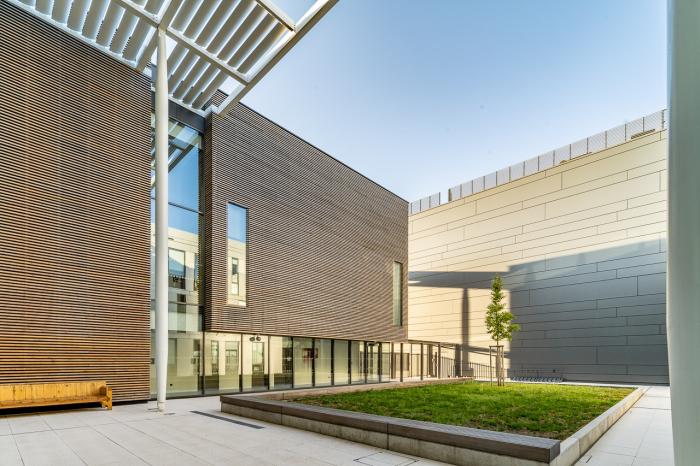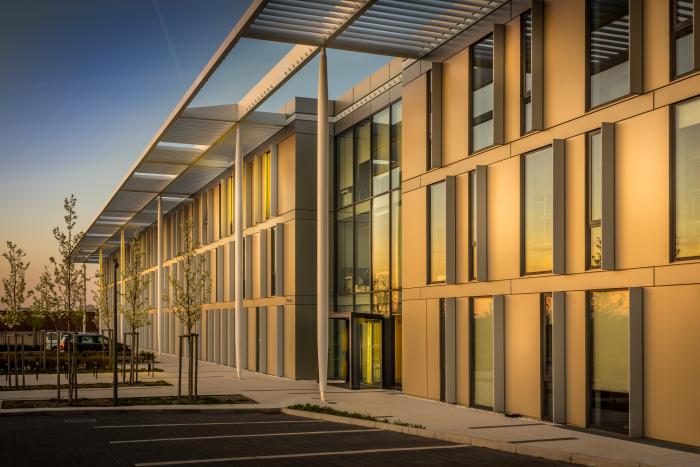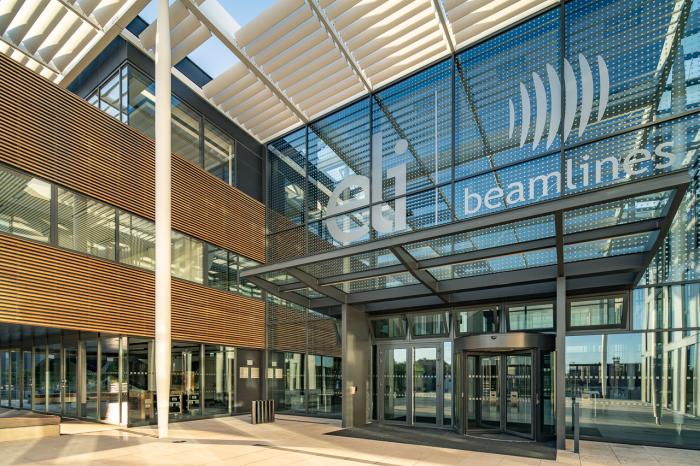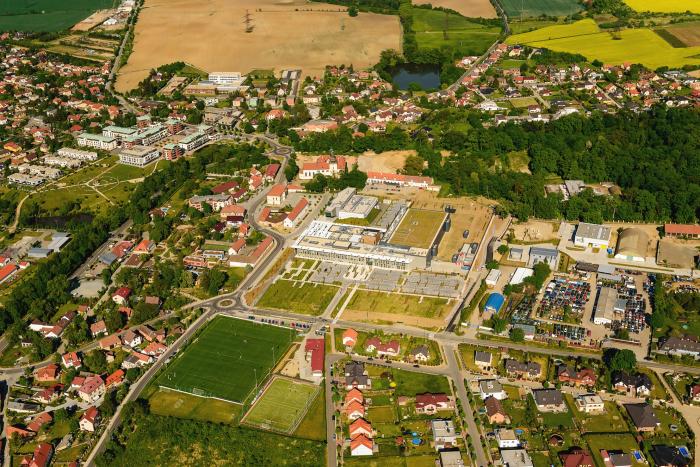The ELI Beamlines Research Facility, which houses some of the world's most intense laser systems, was transferred from the Institute of Physics of the Czech Academy of Sciences (FZU) to the ELI ERIC (Extreme Light Infrastructure ERIC) international research consortium at the beginning of this year. The centre in Dolní Břežany has thus joined the ranks of scientific centres such as CERN or the European Southern Observatory in Chile.
The idea of the Extreme Light Infrastructure (ELI) was initiated by Nobel Prize winner Gérard Mourou. A period of intense Czech preparations culminated in 2008 with him being received by the representatives of the Czech government, led by Mirek Topolánek. Subsequently, on November 24, 2008, the government issued a resolution supporting the candidacy of the Czech Republic to host the Extreme Light Infrastructure international research and technology project.
In the second half of 2009, the European Commission of the European Union evaluated the application sent by the Ministry of Education, Youth and Sports together with applications sent by France, Great Britain, Hungary and Romania. In addition to the Czech Republic, also Hungary and Romania have become host countries and built centres in Szeged, Hungary, and Magurel, Romania, near Bucharest.
For the construction of the infrastructure in the Czech Republic, the Institute of Physics selected neglected land of the defunct agricultural cooperative in Dolní Břežany. In the middle of 2010, construction plans managed to be completed and the actual construction started in 2011.
The ELI complex consists of seven parts: an entrance atrium, office, multifunctional, laboratory and laser buildings, a refrigeration technology building and a technical gas farm. The laser building covers an area the size of a football pitch and consists of a massive concrete structure with walls up to 1.6 m thick. This is needed to shield electromagnetic pulses and ionising radiation and also to ensure vibration stability. The laser centre project by Bogle Architects won the 2014 award for the best architectural project of the year.
The opening ceremony of the ELI Beamlines international facility in Dolní Břežany took place on October 19, 2015 in the presence of the then Director of the Institute of Physics Jan Řídký, representatives of the Academy of Sciences, the Ministry of Education, the Director of the ELI-DC consortium Wolfgang Sandner and Nobel laureate Gérard Mourou.
From the beginning, ELI Beamlines was built as an international centre of excellence.
"From the beginning, ELI Beamlines was built as an international centre of excellence. This has been reflected in all the steps we have taken over the last decade with regard to technology, research activities and the scientific team. I am very pleased that we have now also achieved the highest ambitions in terms of organisation structure," commented Roman Hvězda, Director of ELI Beamlines.
Since its inception, the ELI Beamlines research facility was envisaged to be separated from the structure of the Institute of Physics. A set of agreements transferring the institution to the international organisation ELI ERIC was signed on 18 October 2022 by the Director of the Institute of Physics of the Czech Academy of Sciences, Michael Prouza, and the CEO of ELI ERIC, Allen Weeks. The signing ceremony was also attended by Jan Řídký, Vice-President of the Czech Academy of Sciences, and Lukáš Levák, Director of the Research and Development Department of the Ministry of Education, Youth and Sports, as well as representatives of all ELI ERIC member countries.
With effect from January 1, 2023, all activities of the ELI Beamlines Research Facility as well as tangible and intangible assets, staff and grant projects were transferred on the basis of the integration agreements. At the same time, the FZU and ELI ERIC have entered into a strategic partnership agreement to ensure long-term scientific collaboration and to enable wider access of the Czech scientific community and industry to the use of ELI ERIC.
The incorporation of ELI Beamlines into the ELI ERIC international organisation marks the culmination of a 15-year period of planning, preparation, building construction, technology installation and commissioning.
The actual integration into ELI ERIC also represents the organisational completion of the project and we crossed this imaginary finish line before Hungary and Romania. In retrospect, I am amazed at how much was accomplished in a relatively short period of time," says Jan Řídký, Director of FZU from 2007 to 2017.










